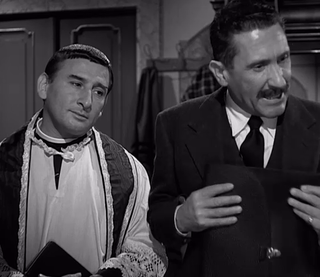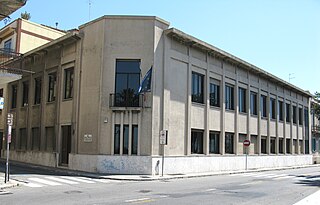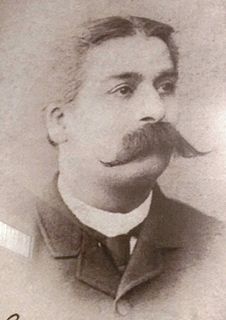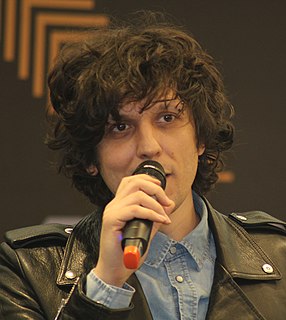Tito Vezio Zapparoli (1885–1943) was an Italian agronomist and plant breeder.

Plant breeding is the science of changing the traits of plants in order to produce desired characteristics. It has been used to improve the quality of nutrition in products for humans and animals. Plant breeding can be accomplished through many different techniques ranging from simply selecting plants with desirable characteristics for propagation, to methods that make use of knowledge of genetics and chromosomes, to more complex molecular techniques. Genes in a plant are what determine what type of qualitative or quantitative traits it will have. Plant breeders strive to create a specific outcome of plants and potentially new plant varieties.
Contents
After graduating in agriculture, he studied the agronomic and morphological characteristics of traditional varieties of maize. [1] [2]

Agriculture is the science and art of cultivating plants and livestock. Agriculture was the key development in the rise of sedentary human civilization, whereby farming of domesticated species created food surpluses that enabled people to live in cities. The history of agriculture began thousands of years ago. After gathering wild grains beginning at least 105,000 years ago, nascent farmers began to plant them around 11,500 years ago. Pigs, sheep and cattle were domesticated over 10,000 years ago. Plants were independently cultivated in at least 11 regions of the world. Industrial agriculture based on large-scale monoculture in the twentieth century came to dominate agricultural output, though about 2 billion people still depended on subsistence agriculture into the twenty-first.

Morphology is a branch of biology dealing with the study of the form and structure of organisms and their specific structural features.

Maize, also known as corn, is a cereal grain first domesticated by indigenous peoples in southern Mexico about 10,000 years ago. The leafy stalk of the plant produces pollen inflorescences and separate ovuliferous inflorescences called ears that yield kernels or seeds, which are fruits.
In October 1920 the Stazione sperimentale di maiscoltura (Maize experimental station) in Curno was established, [3] where he was appointed director after working with the agronomist Ottavio Munerati, the director of the "Beet experimental station" in Rovigo, and a master of the applied agronomic research methodology.

Curno is a comune (municipality) in the Province of Bergamo in the Italian region of Lombardy, located about 40 kilometres (25 mi) northeast of Milan and about 6 kilometres (4 mi) southwest of Bergamo. As of 31 December 2006, it had a population of 7,590 and an area of 4.62 square kilometres (1.78 sq mi).
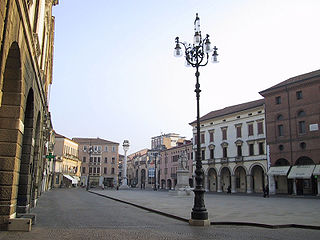
Rovigo is a town and comune in the Veneto region of Northeast Italy, the capital of the eponymous province.
Zapparoli fostered genetic studies, breeding, and agronomic research, improving the varieties of maize cropped in northern and central Italy. He selected isogenic lines from the best performing populations of maize, and used the output of such to establish synthetic varieties and to produce inter-varieties crosses. He also developed the agronomic technique of matching the exigencies of the improved varieties. [4] [5] [6] [7] [8] Zapparoli was known as the "Maize Man" by farmers and colleagues, for his wide and deep understanding of crop issues and for his personal good mood, humbleness, practical skills and probity.

Zygosity is the degree of similarity of the alleles for a trait in an organism.
He selected, multiplied, and spread the improved varieties: Marano (from the municipality of Marano Vicentino, where it was selected), [9] Rostrato, [10] Nostrano dell'Isola, [11] and Scagliolo, [12] selected from the offspring of the crosses performed by progressive farmers in the 19th century, [13] He collaborated with the Federazione italiana dei consorzi agrari (Italian Federation of Agricultural Consortia) for the production, field testing and distribution of the improved varieties of maize.

Marano Vicentino is a town and comune in the province of Vicenza, Veneto, Italy. It is south of Viale Europa.
After his death he was succeeded as director of the "Maize experimental station" by Luigi Fenaroli, who devoted his care to the Italian introduction of hybrid maize technology.

Luigi Fenaroli was an Italian botanist and agronomist.
Zapparoli's work is described in 37 publications of the Stazione sperimentale di maiscoltura, printed from 1921 to 1943. Italian farmers established the Fondazione Tito V. Zapparoli, in order to perpetuate his memory. The Foundation is in charge of the conservation and multiplication of genetic materials for the production of high yielding maize varieties and hybrids.

